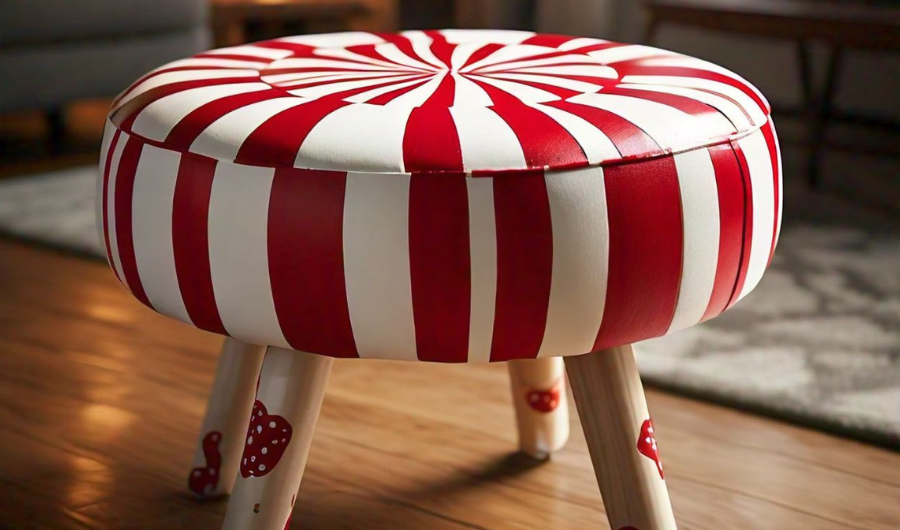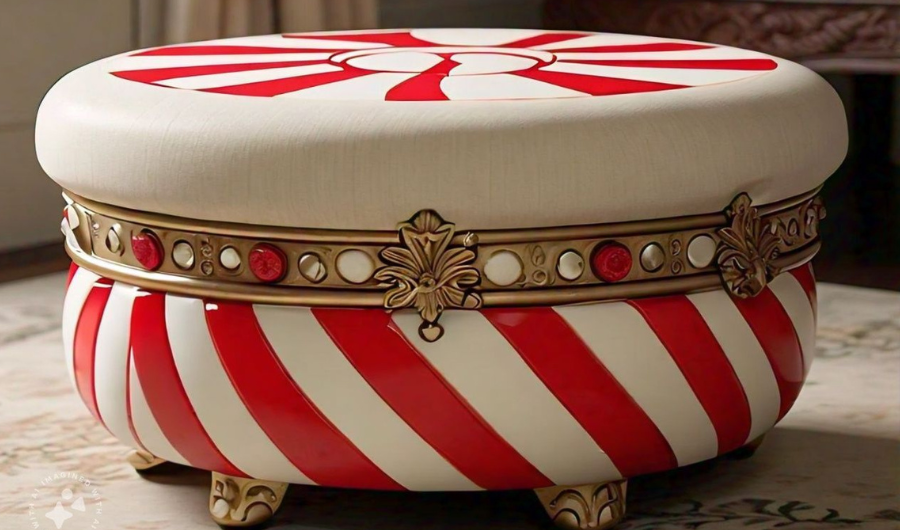Versatility is a crucial idea in the always-changing field of interior design. Those who are passionate about home décor are always looking for pieces that combine traditional elegance with modern flair in a way that makes it easy for them to adjust to shifting fashions and individual tastes. The HomeGoods Peppermint Stools stand out among these adaptable pieces of furniture as classic illustrations of classic style combined with contemporary utility. Together, we will examine the historical context and changing adaptability of these cherished compositions as we travel through time.
Historical Origins:
The origins of Peppermint Stools can be found in the early 1900s, during the height of interior design trends influenced by Art Deco. Bold geometric designs and opulent materials defined Art Deco, which swept over Europe and the United States and left an enduring impression on interior design and architecture. The initial version of what would eventually become Peppermint Stools appeared at this time.
Originally made of rich walnut or mahogany wood, these chairs were given their amusing nickname because of their unique curving legs, which were suggestive of peppermint candies. Peppermint Stools immediately became popular among the wealthy, decorating the opulent interiors of upscale homes and attractive venues with their sleek lines and attention to detail.
Evolution of Design:
New movements and design concepts were introduced as the decades passed, causing considerable changes in the design world. Still, Peppermint Stools’ charm persisted, adjusting to the varying inclinations and tastes of every time period.
Midway through the 20th century, functionalism and minimalist aesthetics gained popularity in the post-war period. In order to adhere to these ideas, designers of peppermint stools chose more straightforward shapes and materials, such leather and chrome. The end product was a simple, elegant take on the traditional style that went well with the period’s minimalist furnishings.
A renewed interest in antique aesthetics emerged in the second half of the 20th century, driven by nostalgia for bygone eras. Designers and homeowners alike experienced a renaissance in popularity for peppermint stools as they rediscover the charm of their Art Deco roots. There was an explosion of reinterpretations at this time, ranging from bold reinterpretations that incorporated modern aspects while maintaining the timeless appeal of the original design to faithful reproductions.
Contemporary Versatility:

Versatility has become synonymous with smart design in the twenty-first century. Customers look for furniture that can accommodate a variety of lifestyles and decor schemes in addition to being useful. In this sense, HomeGoods Peppermint Stools shine because they provide a wide range of style choices that cater to contemporary tastes.
The fact that Peppermint Stools are changeable is one of the main features that adds to their adaptability. Whether they are decorating a modern urban loft or a comfortable suburban house, homeowners may customize these stools to match any interior design scheme by selecting materials, color schemes, and finishes.
Their versatility extends beyond just design—pieces like the at-home Tulsa collection or unique finds such as the Oreo Stool HomeGoods showcase how adaptable furniture can enhance any space. Additionally, options like HomeGoods rugs complement these stools, creating a cohesive and stylish interior. Because of their versatility, Peppermint Stools endure and become classic pieces that go beyond fads.
Furthermore, Peppermint Stools’ modular design allows them to perform a variety of tasks inside a room. Depending on the user’s demands, these stools can serve as more than just seats. They can also be used as side tables, accent pieces, or even plant stands. Because of their adaptability, they are essential in compact living areas where optimum usefulness is critical.
In addition, HomeGoods has made sustainability one of its guiding principles, thus Peppermint Stools are not only fashionable but also ecologically friendly. HomeGoods is dedicated to lowering its carbon footprint and encouraging sustainable living habits by utilizing materials that are obtained responsibly and utilizing environmentally friendly manufacturing techniques.
Practical Applications:
Peppermint Stools are not just useful in homes; they can also be used in a variety of commercial environments. These stools give sophistication and appeal to any setting, whether it is an office lobby, a chic cafe, or an upmarket restaurant or boutique hotel.
Peppermint Stools are fashionable yet useful sitting alternatives that let guests recline in comfort in hospitality situations. They are perfect for high-traffic areas where lifespan is crucial because of their sturdy build. For companies trying to leave a lasting impression, they are an excellent investment because of their classic appearance, which guarantees that they will remain relevant even as design trends change.
Versatile furniture such as peppermint stools promotes innovation and teamwork in the workplace. Whether they are used as stylish accent pieces in lounge areas or as impromptu seating for informal meetings, these stools add to a vibrant and engaging work environment. Their elegant shape adds refinement to any workspace, and their ergonomic construction makes them more comfortable.
Final Words
The Homegoods Peppermint Stools, with their modest beginnings in the Art Deco era and their modern reimagining, have endured as symbols of adaptability and classic style. These stools never cease to enthral homeowners, designers, and companies with their adjustable possibilities, modular design, and sustainable philosophy.
One thing is certain when we consider interior design’s future: generations to come will be inspired and delighted by peppermint stools’ timeless appeal. These recognizable items, along with pink ghost blanket homegoods and lightweight wood, will always have a particular place in the hearts of design fans everywhere, whether they are seen on the covers of design magazines or decorating the interiors of chic homes and businesses.

